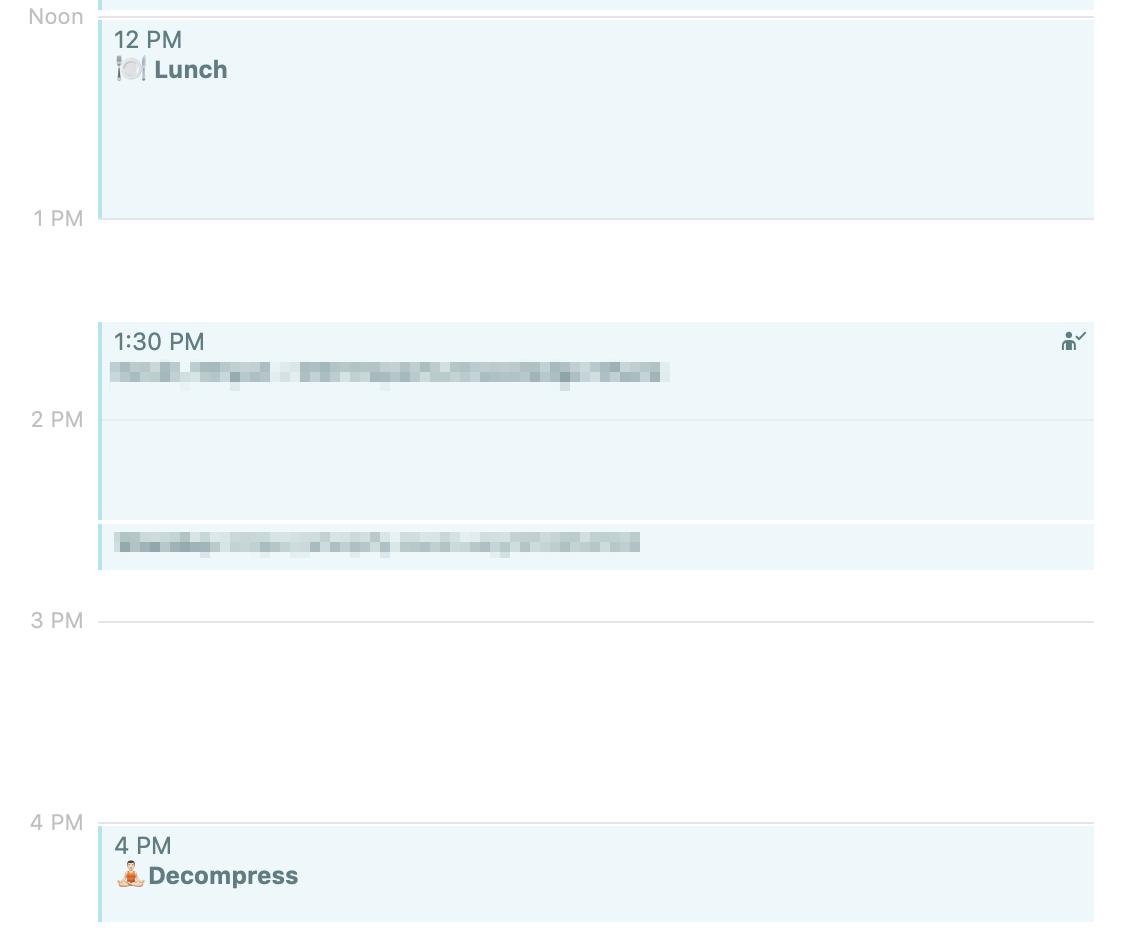Decompressing when Working Remotely

Floating in the Sea by Hobie Caldwell is licensed under CC BY-NC
At the start of this year, I switched jobs. I intentionally aimed for a remote position so I could reclaim approximately 3 hours of my day from commuting. I have a toddler at home and being able to have more time with him is important to me. I have been in situations at my previous job where I would leave before he would wake up and be back home after he is sleeping. I now have the freedom and flexibility to be present for my son, as well as the opportunity to have lunch with my family.
Early on, I noticed that I missed certain aspects of my old commute. I was able to decompress in the time between finishing work and being home with my family. I feel the effects of stress when rushed or pressed for time. Since it takes about 20 seconds to go from my office to the main living area, my mind might be still with work without the time to decompress – this isn’t good for my family or myself.
Make Boundaries with Time Blocking

The above screenshot shows a typical afternoon for me. Let me break down the two important events we can see here.
Lunch
It can be easy to just eat at your desk quickly and keep on working. Working from home presents unique ways to handle your lunchtime. Offices have built-in mechanisms to relieve stress, like ranting to a colleague about the problem you’re hitting, socializing humor and antics, off-topic conversations, etc. For me, it’s about making the best use of my time as a dedicated break to relax the brain.
I took an example from Mitchell Hashimoto to block time for lunch. That time block can move, but I try to ensure that I take an actual lunch. This is time is where I can focus on my family without work distractions (i.e., email and slack) and be present mentally. In the event that I’m home alone, I’ll eat and read, I’ll do some chores or tidying on the main floor while listening to a podcast, and still take the full lunch hour.
I’m hoping to loop in some regular lunch outings with a remote friend in the neighbourhood who also works in the software domain. I suspect this will help us both get out of the house and provide a listening ear.
Decompress
At the end of my day, I slot in a 30-minute block of time to decompress. This to me is where I’ve reconstructed a fake commute to detach from work thoughts. I’ve been experimenting and feel that these three steps work best for me:
- Wrap up the current task. Ideally, this takes less than 10 minutes, as I’m simply getting to a checkpoint in my current task. There is a conscious effort to not dive deeper into things, so a natural endpoint will occur quickly.
- Leave a note on what to start with when I get back to work the next day. This should take less than 5 minutes, as I’m dumping context in my scratchpad (within Notion [Referral Link]).
- Mindfulness exercise (i.e., I’m using Insight Timer) to clear the mind. This should occupy at least 10 minutes. I’m rather new to practicing mindfulness but it is something I am making a part of my day-to-day routine. Ending my work day with this helps me to be more present with my family.
Iterate and Improve
The above are techniques and strategies I’ve put in place to help decompress while working from home. I make it a habit to try and improve my processes, so the same applies here as well. I’ll continue to tweak and experiment with the way I handle decompression time when working from home. I highly encourage the same for you; as you never know what you might be missing if you don’t try.